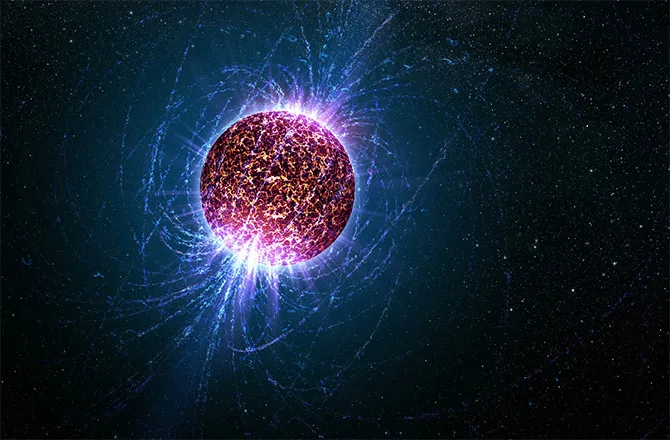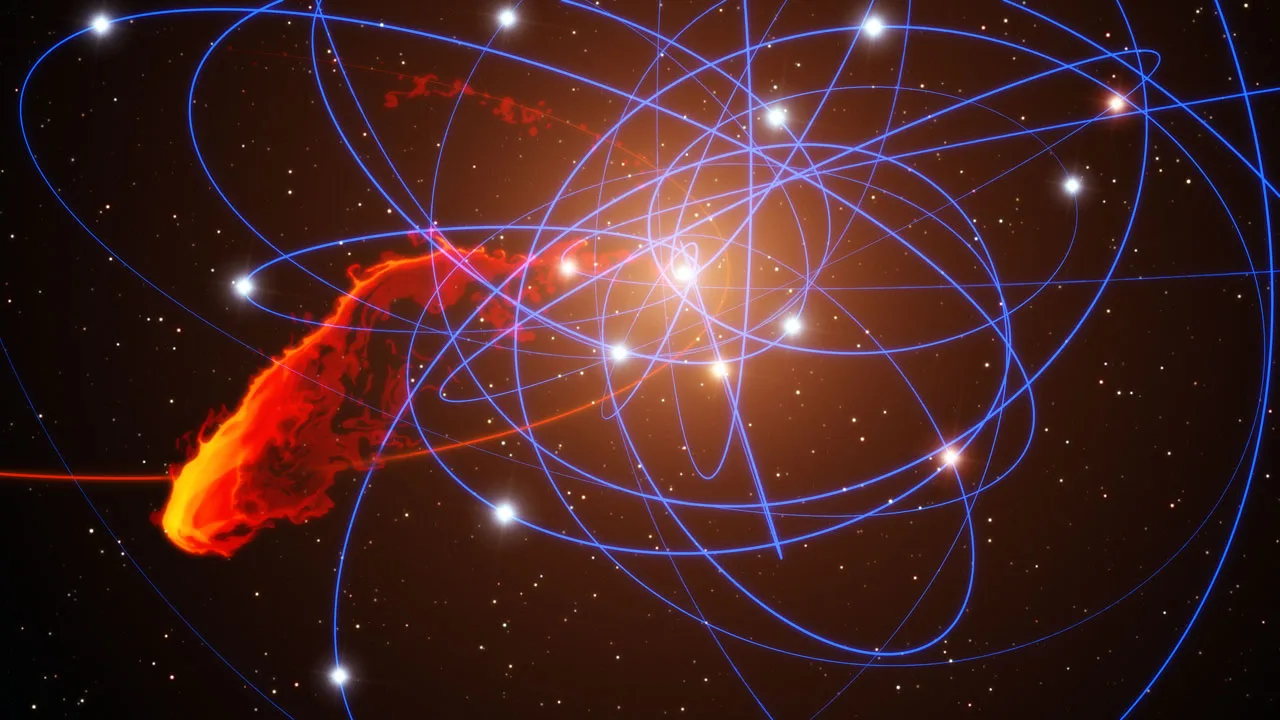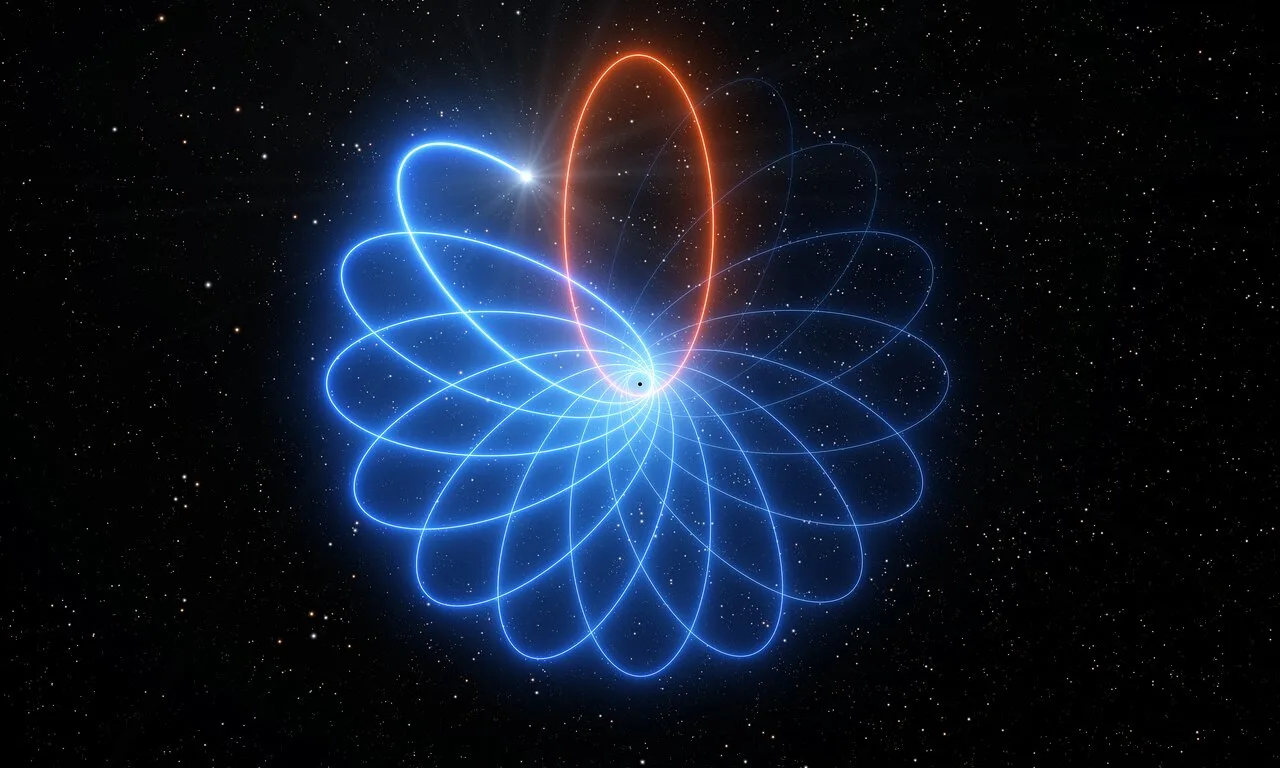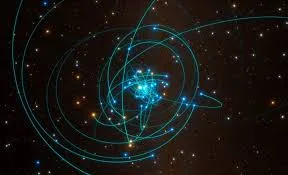In a cosmic spectacle, astronomers have confirmed Einstein’s theory of general relativity in one of the universe’s most extreme environments: the chaotic core of the Milky Way. After nearly 30 years of meticulous observation, the star S2, orbiting the supermassive black hole Sagittarius A* (Sgr A*), has revealed a mesmerizing, flower-like path known as Schwarzschild precession—exactly as Einstein predicted a century ago. This discovery, detailed in a 2020 Astronomy & Astrophysics study, showcases the power of gravity in shaping the orbits of stars near a black hole.

A Star’s Perilous Journey
S2, a bright star in the S-cluster near the Milky Way’s center, orbits Sgr A*, a black hole with a mass 4 million times that of the Sun, located 26,000 light-years from Earth. Unlike a simple elliptical orbit, S2’s path traces a rosette pattern, with each loop slightly offset due to the intense gravitational field warping spacetime. This phenomenon, called Schwarzschild precession, occurs because the star’s closest approach (periapsis) shifts with each orbit, a direct consequence of general relativity’s prediction that massive objects curve the fabric of space.
Using over 300 observations from the Very Large Telescope (VLT) in Chile, equipped with instruments like GRAVITY and NACO, scientists tracked S2’s 16-year orbit from 1992 to 2019. At its closest approach, just 17 light-hours (about 120 astronomical units) from Sgr A*, S2 reaches a blistering 8,900 km/s—nearly 3% the speed of light—experiencing gravitational forces far beyond those testable on Earth. The data confirmed the orbit’s precession at 11 arcminutes per orbit, aligning precisely with Einstein’s calculations and ruling out Newtonian gravity, which predicts no such shift.

A Triumph for General Relativity
Einstein’s 1915 theory of general relativity revolutionized our understanding of gravity, describing it as the curvature of spacetime. While earlier tests, like the precession of Mercury’s orbit, supported the theory, S2’s dance around Sgr A* offers a rare glimpse into gravity’s behavior in an extreme regime. The black hole’s immense mass creates a gravitational field so strong that it bends light and distorts time, making S2’s orbit a perfect laboratory for testing relativity. The 2020 study, led by R. Abuter and the GRAVITY Collaboration, marked the first direct observation of Schwarzschild precession in a star orbiting a black hole, cementing Einstein’s predictions.

A Cosmic Feat of Observation
Tracking S2 required cutting-edge technology. The VLT’s adaptive optics corrected for atmospheric distortion, while GRAVITY’s interferometry achieved unprecedented precision, resolving S2’s position to within 20 milliarcseconds. Over 27 years, astronomers collected data through S2’s full orbital cycle, overcoming challenges like the star’s dimming near Sgr A*’s crowded core. The rosette pattern, observed between 2002 and 2018, matched theoretical models, with no significant deviations, further validating general relativity.

Beyond the Science
The S2 discovery does more than affirm Einstein—it opens doors to probing black holes and their environments. Sgr A*’s influence on nearby stars like S2 helps refine measurements of its mass and spin, offering clues to how supermassive black holes form. The study also paves the way for future tests, such as detecting higher-order relativistic effects or gravitational waves from similar systems.

The wild dance of S2, looping in its radiant rosette around the Milky Way’s dark heart, is a cosmic tribute to human curiosity and Einstein’s genius. As telescopes like the upcoming Extremely Large Telescope push deeper into the galactic center, the saga of S2 and Sgr A* promises to reveal even more about the universe’s most enigmatic forces.


